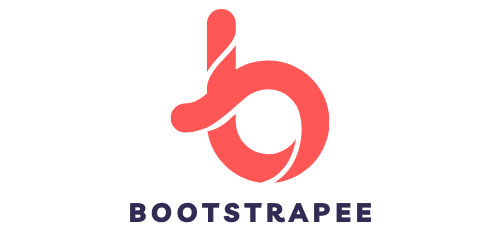As rugby becomes increasingly professional and competitive, teams are looking for every possible edge to enhance their performance. One area that has gained significant attention is the use of GPS (Global Positioning System) data to track and analyze player movements during games and training sessions. While this technology has been used in sports like football and basketball for some time, it is relatively new to rugby. But how can it be used to improve the performance of specific players like wingers?
Understanding the Role of Wingers in Rugby
The winger, also known as the ‘winger forward’, is a key player in any rugby team. These players are usually the fastest on the team, with the ability to break past defenders and score tries. They often cover more distance during a game than any other player, making their physical demands and workload significantly higher.
En parallèle : Can Cognitive Training Enhance Peripheral Vision in Soccer Goalkeepers?
The use of GPS data can help to quantify these demands, providing a more objective measure of the winger’s workload during both games and training sessions. By understanding how much distance a winger covers, at what speed, and for how long, coaches can tailor their training programs to better prepare these players for the demands of the game.
Using GPS Data to Monitor Performance
GPS technology allows for the tracking of multiple variables related to performance, including distance covered, speed, and time. When used in a game situation, this data can provide valuable insights into a player’s performance and workload.
Dans le meme genre : What Are the Long-Term Athletic Development Models for Child Hockey Players?
For example, by monitoring the distance covered by a winger during a game, coaches can assess whether the player is meeting their positional requirements. If a winger is covering less distance than expected, it may indicate that they are not getting involved in the game as much as they should be, or that they are fatiguing prematurely.
Similarly, by tracking speed, coaches can assess a winger’s explosiveness and ability to break through defensive lines. If a winger’s top speed is declining over the course of a game, it could indicate that they are fatigued and need to be substituted.
Tailoring Training Programs with GPS Data
The use of GPS data is not limited to game situations. By using this technology during training sessions, coaches can design more specific and effective training programs for their wingers.
For instance, if GPS data shows that a winger often has to sprint at maximum speed for short distances during a game, coaches can incorporate more high-intensity interval training into their training program. This type of training has been shown to improve both speed and anaerobic fitness, which are critical for wingers.
Conversely, if the data shows that a winger spends a lot of time running at a moderate pace, they may benefit from a training program that focuses more on aerobic fitness. This can help them maintain a high work rate throughout the entire game, without fatiguing prematurely.
Integrating GPS Data with Other Performance Measures
While GPS data can provide valuable insights into a player’s performance, it is most effective when integrated with other performance measures. This may include traditional measures like tackle counts and try scores, as well as more modern techniques like video analysis.
For example, a study on Google Scholar demonstrated how GPS data can be used in conjunction with video analysis to study the defensive movements of rugby players. By combining these two data sources, the researchers were able to gain a more complete understanding of how players react in different defensive situations, and how this can impact their overall performance.
Ultimately, the goal of using GPS data in professional rugby is to enhance player performance. By providing a more objective measure of player workload and demands, this technology can help to design more effective training programs, monitor player fatigue, and inform tactical decisions during games.
While it is still a relatively new tool in rugby, the potential benefits of GPS technology are significant. With continued research and development, it is likely that we will see this technology become an increasingly integral part of professional rugby training and performance analysis.
The Potential for Predictive Analysis with GPS Data
GPS data in team sports like rugby union not only allows for quantifying workload and performance metrics, but it also holds great promise in predictive analysis. Predictive analysis involves using historical data to forecast future outcomes. When applied to rugby, GPS data could potentially be used to anticipate player performance, fatigue levels, and even injury risks.
For instance, by studying past data on a player’s match play, such as total distance covered, high speed running, and time spent at different intensity levels, predictive models can be developed. These models could indicate when a player might need to be substituted to avoid fatigue-related injuries or performance drop-offs.
Additionally, GPS data can be used in conjunction with other measures of external load, like strength conditions and ssg models, to better understand the physical demands of the game. By comparing these measures with internal load indicators, such as heart rate and perceived exertion, a more holistic view of a player’s load and recovery status can be achieved.
Information from predictive analysis can be used to inform decisions about player rotation, resting strategies, and individualized training programs. However, this is a complex process. It requires not only the collection and analysis of GPS data but also the ability to integrate this data with other performance measures, interpret the findings, and apply them practically.
Conclusion: The Future of GPS Data in Professional Rugby
There’s no doubt that the integration of GPS data into the world of professional rugby is significantly altering the way teams assess performance and prepare their players. While forwards and backs might have different physical demands and positional requirements, using GPS data allows coaches to tailor training programs that meet these specific needs.
The predictive analysis capabilities of GPS data offer exciting possibilities for the future. With the continued development of technology and the increasing availability of large datasets, we can expect to see more sophisticated analyses, providing even deeper insights into player performance and workload.
Moreover, the integration of GPS data with other performance measures, such as those found on Google Scholar, PubMed abstract, Crossref full, and DOI PubMed, will enable a more comprehensive understanding of player performance. This includes traditional measures like tackle counts and try scores, as well as newer techniques like video analysis.
In conclusion, the use of GPS data in professional rugby is about much more than just tracking distance and speed. It’s about gaining a deeper, more nuanced understanding of player performance, workload, and the physical demands of the game. As the technology continues to advance, it is likely to become an increasingly integral part of professional rugby training and performance analysis. Ultimately, the goal of using GPS data is to enhance player performance, and with the potential benefits it offers, the future looks promising.






